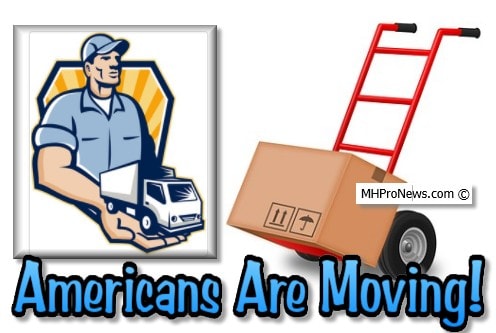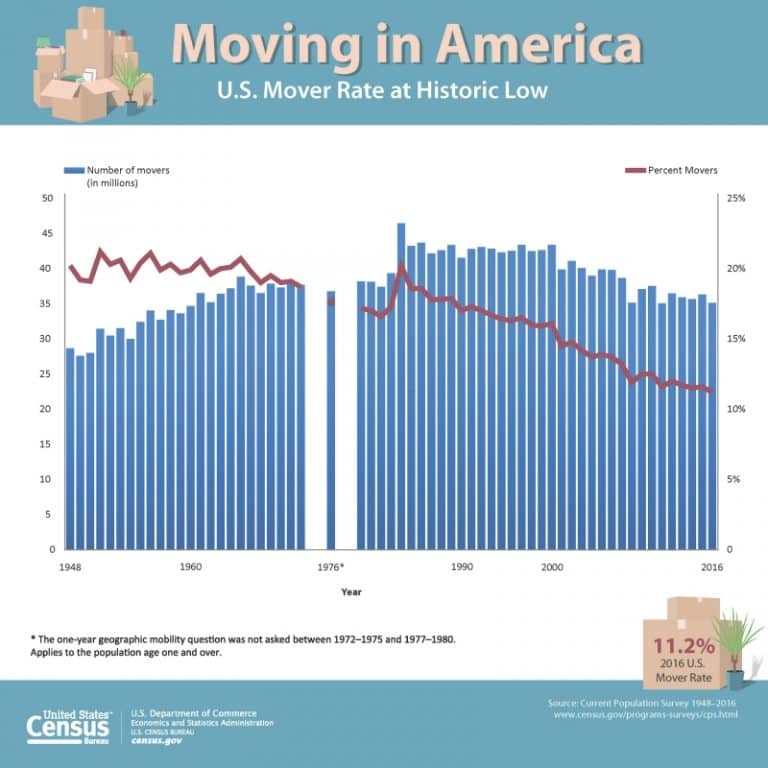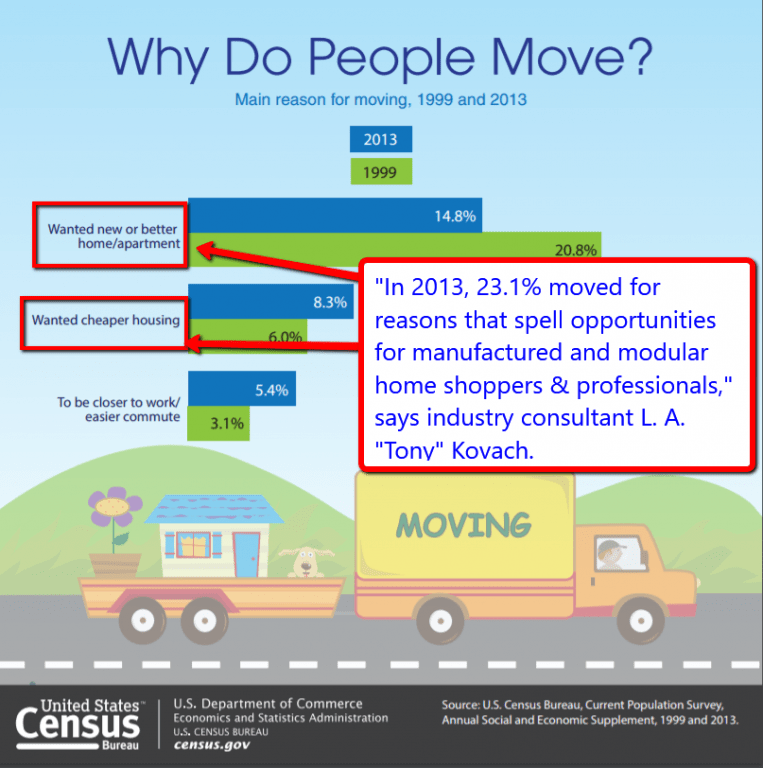
Not every mover in an area may not represent an opportunity to sell a home, or fill a leased site/home in a community. But many – once they’re properly exposed to the realities of contemporary manufactured home living – discover they like what the industry offers, and will act positively.
How Often Do People Move?
The percentage of Americans moving over a one-year period fell to an all-time low in the United States to 11.2 percent in 2016, according to data released by the U.S. Census Bureau last November.
But that ‘low’ still means that almost 1 out of every 9 people you pass is going to make a housing change – in the next 12 months.
While some are last minute housing shoppers, National Association of Realtor figures suggest that home buyers start looking online months in advance of a housing transition.
Those advance shoppers are also often the more credit qualified buyers.

Details on People Moving
“People in the United States are still moving, just not to the same extent as they did in the past,” David Ihrke said, a survey statistician in the Journey-to-Work and Migration Statistics Branch.
“The decision to move can be personal and contextual. What causes one person to move might not be enough to convince another,” Ihrke said.

According to the Census Bureau, among those who moved, 42.2 percent said they moved for a housing-related reason, such as wanting a new or better home/apartment.
By comparison,
- 27.4 percent said they moved for a family-related reason,
- 20.2 percent said they moved for an employment-related reason,
- and 10.2 percent said they moved for some other reason.
Among the various regions in the U.S., the South saw the greatest number of people moving out (901,000), but also saw the largest inflow of people moving into the region (940,000).
The ratios, states the Census Bureau, was similar in other parts of the country.
The highest mover rates by race:
- black or “African-American alone population” – 13.8 percent, and
- “Asian alone population” – 13.4 percent.
By comparison,
- the “white alone” population moved at a rate of 10.3 percent, and
- the Hispanic or Latino population (12.6 percent) were more mobile than the non-Hispanic white population (9.8 percent).
Geographic Mobility
The statistics came from Geographical Mobility: 2015 to 2016, a collection of national- and regional-level tables from the Census Bureau’s Current Population Survey Annual Social and Economic Supplement.

Also published were updated historical tables and graphs on migration. Some of those statistics extended as far back as 1948, stated the Census Bureau report.
Tapping into the Opportunities Revealed by the Facts
“The proper understanding of the market, what moves housing shoppers, and the correct mind-set are all important for a manufactured home professional,” says consultant and manufactured home industry veteran, L. A. ‘Tony’ Kovach.
The video interview with Tom Fath of New Durham Estates on this page demonstrates how changing a professional’s understanding and approach to marketing and selling can yield more credit qualified and cash customers.
“The truth well told is powerful,” says Kovach. “What award winning operations like the Fath family’s has learned, is that there’s no need to exaggerate, over-promise, or under-deliver. Those who do, suffer in the long run. Those who learn more to earn more, often see sustained growth and success.” ##
(Image credits are as shown above, and when provided by third parties, are shared under fair use guidelines.)

